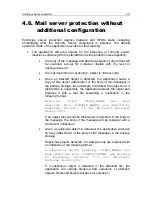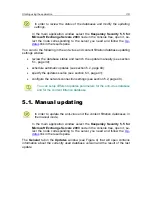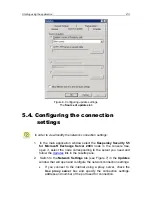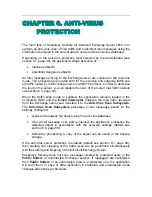
CHAPTER 6. ANTI-VIRUS
PROTECTION
The main task of Kaspersky Security for Microsoft Exchange Server 2003 is to
perform an anti-virus scan of mail traffic and to disinfect mail messages using the
information contained in the current (latest) version of the anti-virus database.
Depending on the anti-virus protection level selected by the administrator (see
section 6.1, page 49), the application allows detection of:
•
malicious objects;
•
potentially dangerous objects;
All mail messages arriving to the Exchange server are scanned in the real-time
mode. The processing is provided both for the incoming and outgoing traffic and
all traffic routed by the Exchange server via SMTP protocol. In order to decrease
the load on the server, you can disable the scan of the routed mail traffic (details
see section 6.3, page 53).
When the traffic scan mode is enabled, the application remains loaded in the
computer's RAM and the
E-mail Interceptor
analyzes the mail traffic received
from the Exchange server and transfers it to the
Anti-Virus Scan Subsystem
.
The
Anti-Virus Scan Subsystem
processes e-mail messages based on the
settings configured:
•
scans and analyzes the object using the anti-virus database;
•
if an e-mail message or its part is infected, the application processes the
detected object in accordance with the selected settings (details see
section 6.4, page 56);
•
before the processing, a copy of the object can be saved in the backup
storage.
If the anti-virus server protection is enabled (details see section 6.1, page 49),
then starting and stopping of the traffic scan will be performed simultaneously
with the starting and stopping of the Microsoft Exchange Server.
Kaspersky Security does not scan messages created by protected users in the
Public folders
of unprotected Exchange servers. If messages are transferred
from
Public folders
of an unprotected area to a protected one, the application
will scan them. In case of data replication in protected and unprotected areas
changes will not be synchronized.
















































